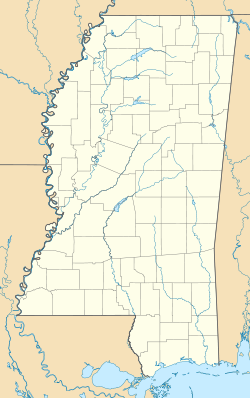Odd Fellows and Confederate Cemetery | |
 Confederate Cemetery in 2019 | |
| Location | Corner of Cemetery and Commerce Sts., Grenada, Mississippi |
|---|---|
| Coordinates | 33°46′29″N89°48′39″W / 33.77472°N 89.81083°W |
| Area | 8.5 acres (3.4 ha) |
| Architectural style | Gothic;Romanesque;Classical |
| MPS | Grenada MRA |
| NRHP reference No. | 87002341 [1] |
| Added to NRHP | January 20, 1988 |
The Odd Fellows and Confederate Cemetery, located at the corner of Cemetery and Commerce Streets in Grenada, Mississippi, is a historic cemetery. It includes Gothic architecture, Romanesque architecture, Classical architecture. It was listed on the National Register of Historic Places in 1988 for its architectural criteria. [1]
The Confederate section contains about 150 graves of Confederate soldiers who died in the Grenada area. [2]
The cemeteries may contain burials from several specific calamities. Grenada suffered a tornado on May 7, 1846, which destroyed 112 houses and killed 21 persons. It also suffered a fire in 1855 which burned about half of the town's buildings. [3] : 8 Soon after the fall of Vicksburg, Grenada was the site of a Union cavalry raid on August 18 and 19, 1863, which overwhelmed a token defensive force and destroyed the town's railway depot, railyard buildings, eighty locomotives and 200 freight cars. [3] : 8
The cemetery may also include burials of victims of a devastating Yellow Fever epidemic in 1878, which killed at least 363 individuals—including the mayor—in a town of about 2,000 residents. [3] : 10–11


